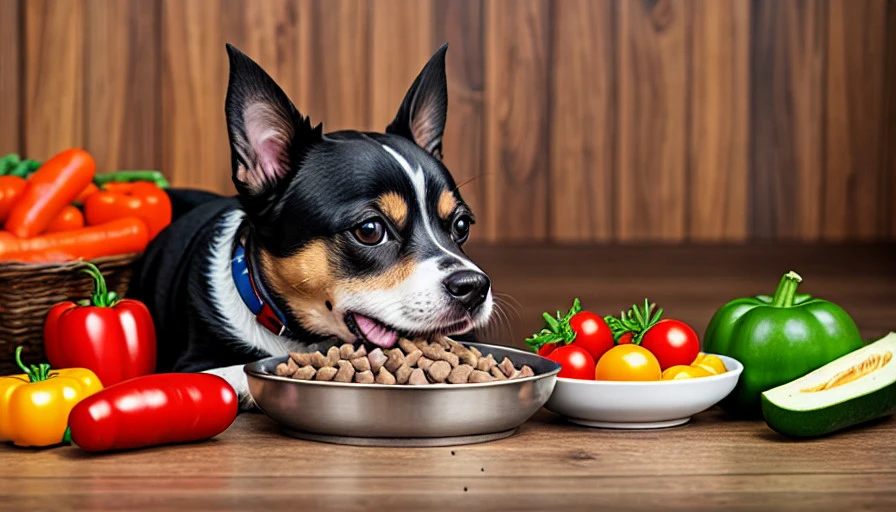When it comes to pampering our furry friends, there’s nothing like the joy of giving them a tasty treat. But have you ever wondered if you’re overdoing it? How many treats can you safely give your dog without compromising their health? In this article, we’ll dive into this tasty topic and explore the dos and don’ts of dog treats.
The Basics of Dog Treats
Let’s start with the fundamentals.
Dog treats are designed to be delicious tidbits that you can give your canine companion as a reward, for training, or simply to show them some love. They come in various shapes, sizes, and flavors, making them hard to resist – both for dogs and us! However, it’s important to remember that treats should be just that: treats.
Finding the Right Balance
It’s tempting to shower your dog with treats constantly, especially when those puppy eyes beg for more. But here’s the thing – overindulgence in treats can lead to health issues, such as obesity and dental problems. To strike the right balance, consider the following:

- Portion Control: Be mindful of the size and number of treats you give. Smaller dogs need fewer treats than larger ones. Check the packaging for recommended serving sizes.
- Nutritional Value: Opt for treats that have some nutritional benefits. Look for ingredients like real meat, vegetables, or whole grains. This way, your dog gets a little extra goodness with their treat.
- Caloric Intake: Keep an eye on your dog’s daily caloric intake, including treats. Ensure their overall diet remains balanced.
- Training Rewards: Treats are great for training purposes. Use them strategically during training sessions to reinforce good behavior.
What the Experts Say
To get a better understanding of how many treats are too many, we turned to Dr. Sarah Johnson, a renowned veterinarian specializing in canine nutrition. She emphasizes that moderation is key:
“While treats can be a valuable tool for training and bonding with your dog, they should make up no more than 10% of your dog’s daily caloric intake. Be selective with your choices, and always keep an eye on your dog’s weight and overall health.”
Dr. Johnson’s advice highlights the importance of treating responsibly. Next, we’ll explore some common signs that indicate your dog might be getting too many treats.
Signs of Overindulgence
Our furry friends can’t always tell us when they’ve had enough, so it’s crucial to be on the lookout for signs that you might be giving too many treats.

1. Weight Gain
One of the most obvious signs is weight gain. If you notice your dog packing on the pounds despite maintaining their regular diet, it’s time to reassess their treat intake.
2. Digestive Issues
Frequent bouts of upset stomach, diarrhea, or excessive gas can be indicators of excessive treat consumption. Pay attention to any changes in your dog’s digestion.
3. Decreased Appetite for Regular Meals
If your dog starts turning their nose up at their regular food in favor of treats, it’s a clear signal that treats are taking over their diet.
4. Dental Problems
While some treats are designed to improve dental health, others can contribute to dental issues if given excessively. Watch for signs of dental discomfort, such as bad breath, drooling, or reluctance to chew.
5. Behavioral Changes
Excessive treats can sometimes lead to hyperactivity or other behavioral changes in dogs. If your pup becomes unusually restless or excitable, it might be time to cut back.
Responsible Treat-Giving
Now that we’ve discussed the signs of overindulgence, it’s essential to emphasize responsible treat-giving. Remember, treats should complement your dog’s diet, not dominate it.
- Variety is Key: Rotate the types of treats you offer to ensure a well-rounded diet and prevent boredom.
- Read Labels: Always read the ingredient list to make informed choices. Avoid treats with excessive additives or fillers.
- Consult Your Vet: If you’re unsure about the right number of treats for your dog’s specific needs, consult your veterinarian. They can provide personalized guidance.
Maintaining a healthy balance of treats is essential for your dog’s well-being. In the next section, we’ll explore some creative alternatives to traditional treats that can still bring joy to your furry friend.
Creative Treat Alternatives
Treats don’t always have to be store-bought biscuits or chew sticks. You can get creative with alternatives that are both enjoyable for your dog and beneficial for their health.
1. Frozen Fruits and Vegetables
Many dogs love the crunch and taste of frozen fruits and vegetables. Try offering small pieces of frozen carrots, green beans, or apple slices. These low-calorie options are not only delicious but also provide essential vitamins and fiber.
2. Homemade Treats
Consider making your dog’s treats at home. There are countless recipes online for DIY dog treats using wholesome ingredients like peanut butter, pumpkin, or oats. This way, you have full control over what goes into your dog’s snacks.
3. Interactive Toys
Interactive toys like puzzle feeders and Kong toys can be filled with a mixture of kibble and a portion of their daily treat allowance. This engages their mind and extends the enjoyment of their treats.
4. Training with Affection
Sometimes, a simple “good boy” or a pat on the back can be as rewarding as a physical treat. Use positive reinforcement through affection and praise during training sessions to keep your dog motivated.
5. Dental Chews
Dental chews that promote oral health can be a great treat alternative. They serve a dual purpose by satisfying your dog’s urge to chew while helping to keep their teeth clean.
By exploring these creative treat alternatives, you can provide variety and mental stimulation to your dog while managing their treat intake. Keep in mind that moderation is still essential.
Consequences of Excessive Treats
It’s crucial to be aware of the potential consequences of overindulging your furry friend with treats. While treats can be a source of joy and bonding, excessive consumption can lead to a range of health issues for your dog.
1. Weight Gain and Obesity
Excessive treats can contribute to weight gain and obesity in dogs. Obesity can lead to a host of health problems, including joint issues, diabetes, and heart disease. Maintaining a healthy weight is essential for your dog’s overall well-being.
2. Dental Problems
Some treats, especially those high in sugar and additives, can lead to dental issues such as cavities and gum disease. While dental chews can help, they should be used in moderation.
3. Digestive Upsets
Overloading your dog with treats can result in digestive problems like diarrhea, vomiting, and stomach discomfort. This can be distressing for both you and your furry companion.
4. Nutritional Imbalance
If treats make up a significant portion of your dog’s diet, it can lead to a nutritional imbalance. Your dog may miss out on essential nutrients they need for optimal health.
5. Behavioral Changes
An excessive number of treats can affect your dog’s behavior. They might become more demanding or show signs of anxiety when treats aren’t forthcoming.
Striking the Right Balance
Understanding the potential consequences of excessive treat consumption underscores the importance of finding the right balance. Treats should be a small part of your dog’s daily life, not the main event.

Conclusion
In the delightful world of dog treats, it’s easy to get carried away by the sheer joy of pampering our furry friends. However, as responsible pet parents, it’s essential to strike a balance between indulgence and moderation.
Remember, treats should be a small part of your dog’s daily diet, not the main course. By following these guidelines:
- Practicing portion control.
- Opting for nutritious treats.
- Monitoring your dog’s caloric intake.
- Using treats for training and positive reinforcement.
- Being mindful of signs of overindulgence.
You can ensure that treats remain a positive and healthy addition to your dog’s life. Consult your veterinarian for personalized advice on treat-giving, as every dog is unique.
Ultimately, the key is to keep your furry friend happy, healthy, and wagging their tail with delight. So, go ahead, share a treat, but remember, a little goes a long way in showing your love and appreciation for your canine companion.
Thank you for reading, and may your dog enjoy their treats in good health and happiness!
You can explore further information on RSPCA or ASPCA related to your pet.
People Also Reads:
